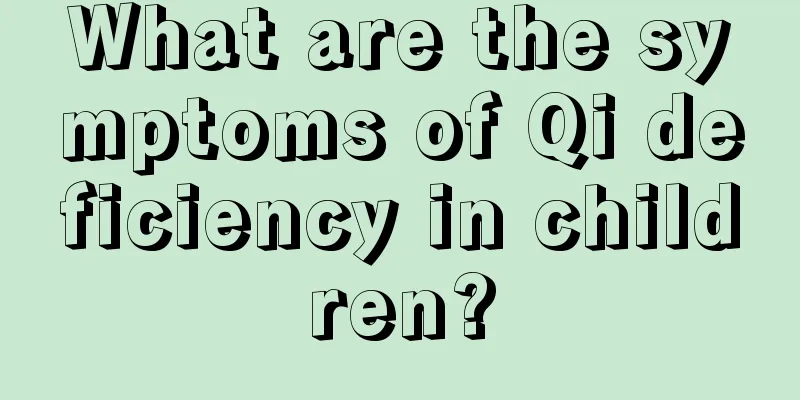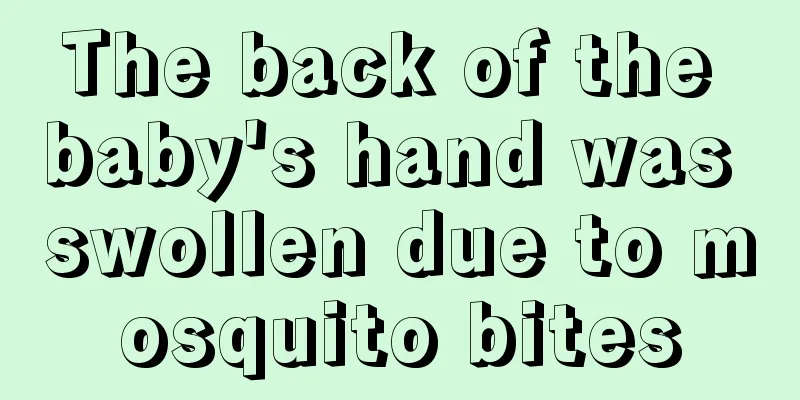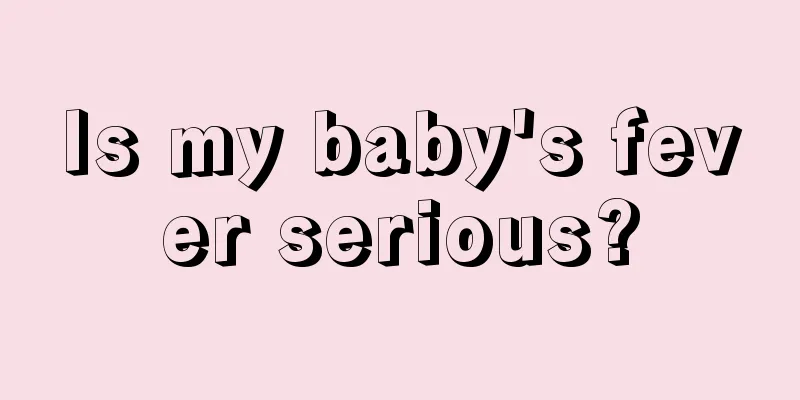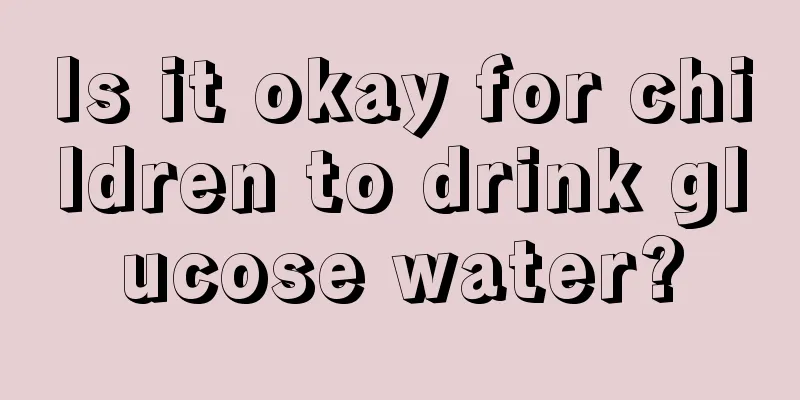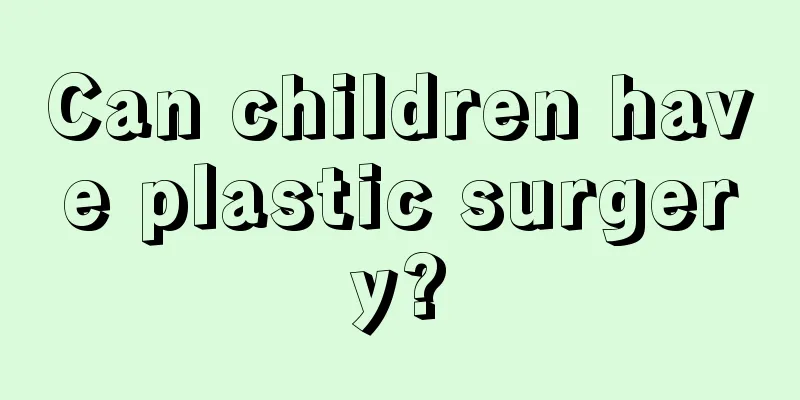The child has a fever and cold hands and feet. This is the correct way to cool down
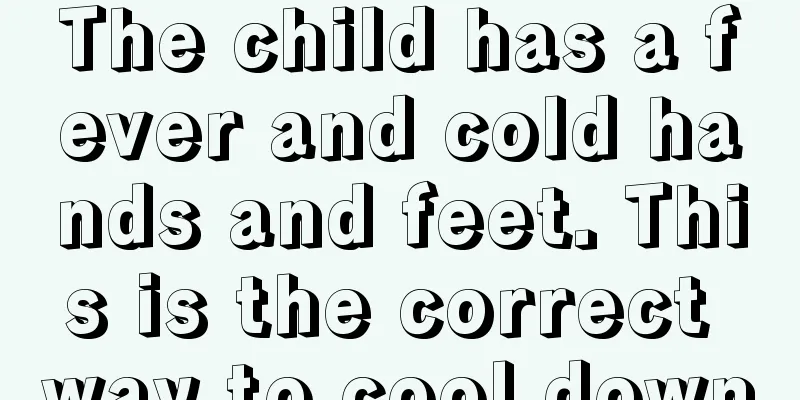
|
If a child has a fever but cold hands and feet, it means that the child is experiencing a false cold and is really hot, and the body temperature will continue to rise. Many parents are at a loss when faced with a child's fever. If your baby has a fever but his hands and feet are still cold, remember to warm up his hands and feet to better reduce the temperature. 1. Having a fever but cold hands and feet is a false cold and a real heat When a baby has a fever but his hands and feet are cold, it is a phenomenon of false cold and real heat, which is especially common in infants and young children under 3 years old. This is mainly because infants and young children have less blood in their limbs than in their internal organs. Due to insufficient blood supply to their limbs, they are more likely to feel cold than adults. In addition, the baby's nervous system is not yet fully developed, and the autonomic nerves responsible for managing vasodilation and contraction are prone to disorder, resulting in the small blood vessels at the ends of the limbs being in a spasmodic contraction state and becoming cold when the high fever first occurs. This is a normal pathological manifestation. The baby should be given more water to lower the body temperature in time and promote circulation and metabolism. Many parents do not understand this situation. Once they find their baby's limbs are cold, they mistakenly think that the baby has caught a cold and is afraid of the cold, so they immediately wrap the baby tightly. As a result, the baby's body temperature cannot be dissipated in time and keeps rising, and even high fever and convulsions occur. 2. Children with cold hands and feet and fever should be cooled down in time Physical cooling: If the child's fever does not exceed 38.5℃, it is recommended to use only physical cooling, which is simple, effective and has no side effects. For example, warm water bath, use a warm and wet towel to wipe the child's head, armpits, and limbs to promote heat dissipation; you can also apply a cold towel to the baby's forehead; or take an alcohol bath, dilute the alcohol to 30%-50% with warm water, dip gauze in alcohol, and wipe the following areas: neck, armpits, elbows, thighs, etc. The temperature should be measured after half an hour. If the temperature continues to rise, the child should be sent to the hospital for further diagnosis and treatment. Medication can be used to reduce the temperature, but if the temperature exceeds 38.5℃, or physical cooling is ineffective, you can use fever-reducing patches or antipyretic drugs to reduce the temperature. When using antipyretic drugs, be sure to pay attention to the dosage and any contraindications. Families can choose to take over-the-counter antipyretics orally, but be careful not to take them frequently or in excess. Children often sweat a lot after taking the medicine, so pay attention to replenishing water to prevent dehydration. Never use antipyretics frequently or in excess. If your body temperature exceeds 39℃, go to the hospital for treatment as soon as possible. It is not advisable to cover the baby's sweat. When the baby has a fever, you should take off his clothes, but you should not cover the baby's sweat to lower the body temperature, because excessive sweat loss will make the child feel tired and weak. Moreover, children's sweat glands are underdeveloped, and if they cover themselves up with sweat when they have a fever, they will often get hotter and hotter, which can easily cause heat stroke syndrome and induce high fever convulsions. The correct approach is to undress your child, help him dissipate heat, have him drink plenty of water, and eat liquid food, such as watermelon juice, to ensure that the body has enough energy and water. Seek medical treatment promptly. Parents should observe changes in their child's condition at any time. If the child's spirits improve and the body temperature gradually drops, the condition will improve with proper care. If the high fever recurs, you should go to the hospital for treatment in time. |
<<: How to care for children with albinism and good strategies to help them recover
>>: What age is an electric toothbrush suitable for children?
Recommend
Symptoms of mycoplasma infection in children
If a child is infected with mycoplasma, the most ...
What kind of diapers are good to introduce
Some parents are very concerned about their child...
What to do if your baby starts to wake up while sleeping
Every child has a different physique, so during t...
What foods should children eat when they have diarrhea? These seven are worth recommending
Children often have diarrhea symptoms. At this ti...
One-year-old baby with allergic rhinitis
It is not a big deal for adults to have rhinitis,...
What to do if your child's feet peel
Foot peeling is generally seasonal, occurring in ...
Symptoms of constipation in newborns
Constipation in newborns is a relatively common s...
What should children not eat when they have a cough?
Children's coughing is also a concern and dis...
Is laryngitis serious in children?
In our lives, many children suffer from pharyngit...
What should I do if my 6-year-old child has tooth decay pain?
Even if there are adults around who constantly re...
What to do if your child has a sore throat and phlegm
If a child has phlegm in his throat, you should g...
How to treat bronchitis in a 3-year-old?
When it comes to children's bronchitis, mothe...
What is the disease of children being easily excited?
Children are much more curious about the outside ...
Two month old baby crying while drinking milk
Since infants and young children cannot express t...
Is it good for babies to take baths frequently?
For newborn babies, parents and family members al...
